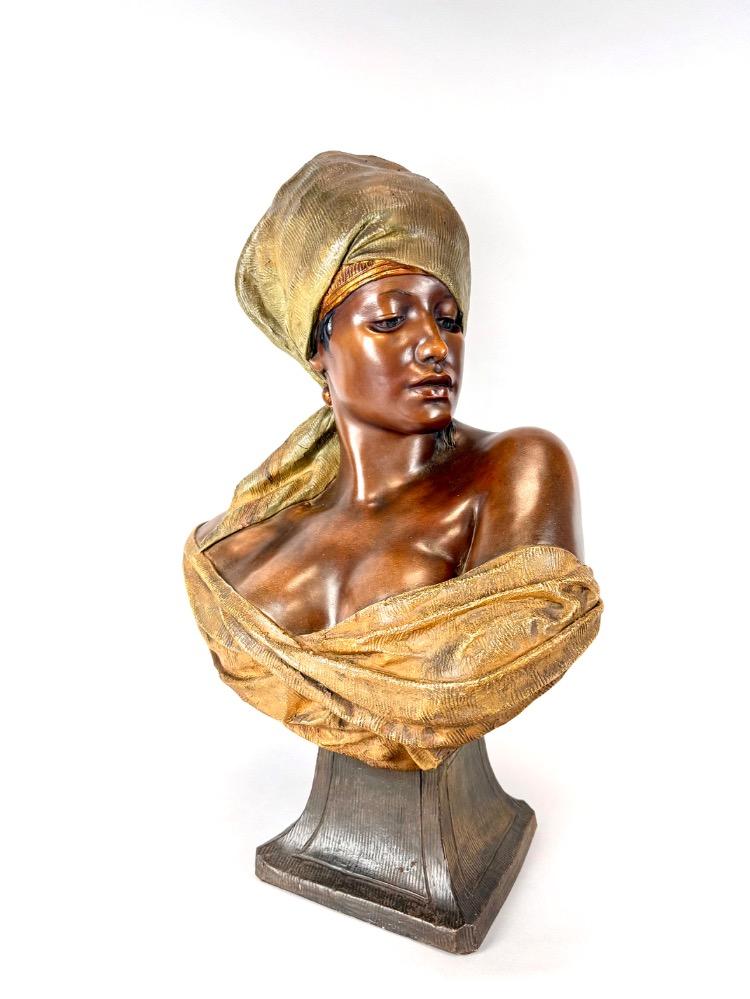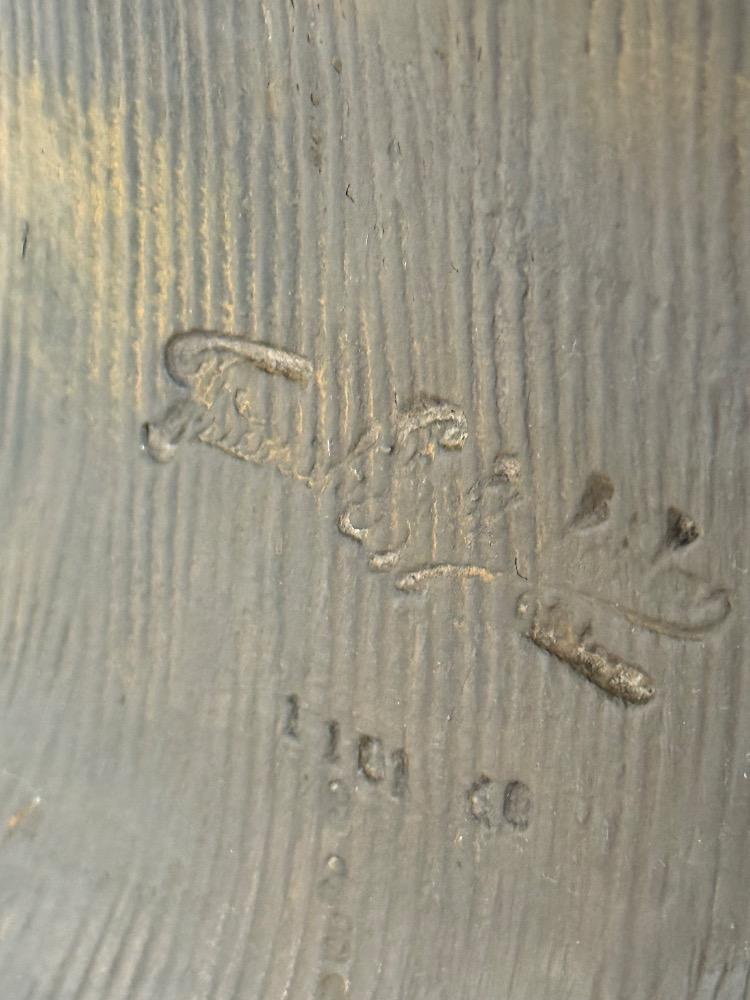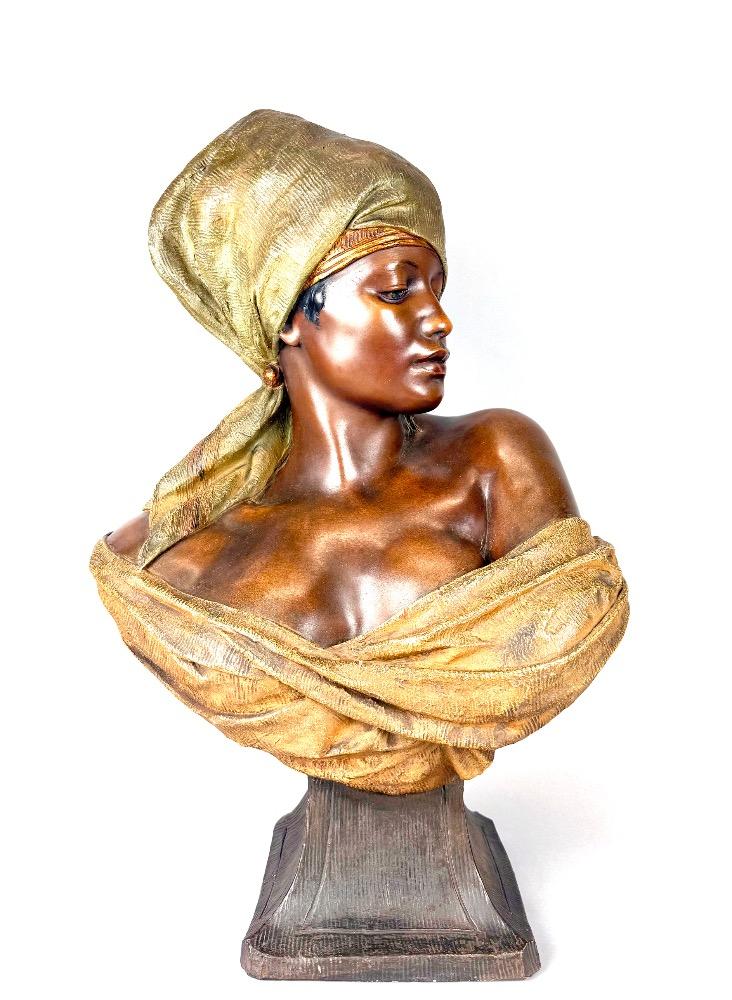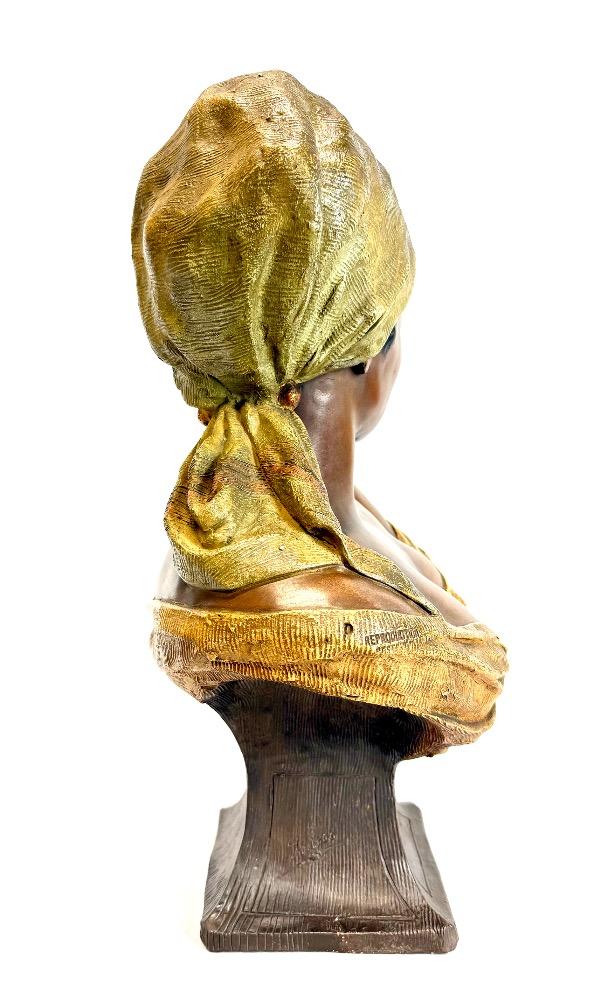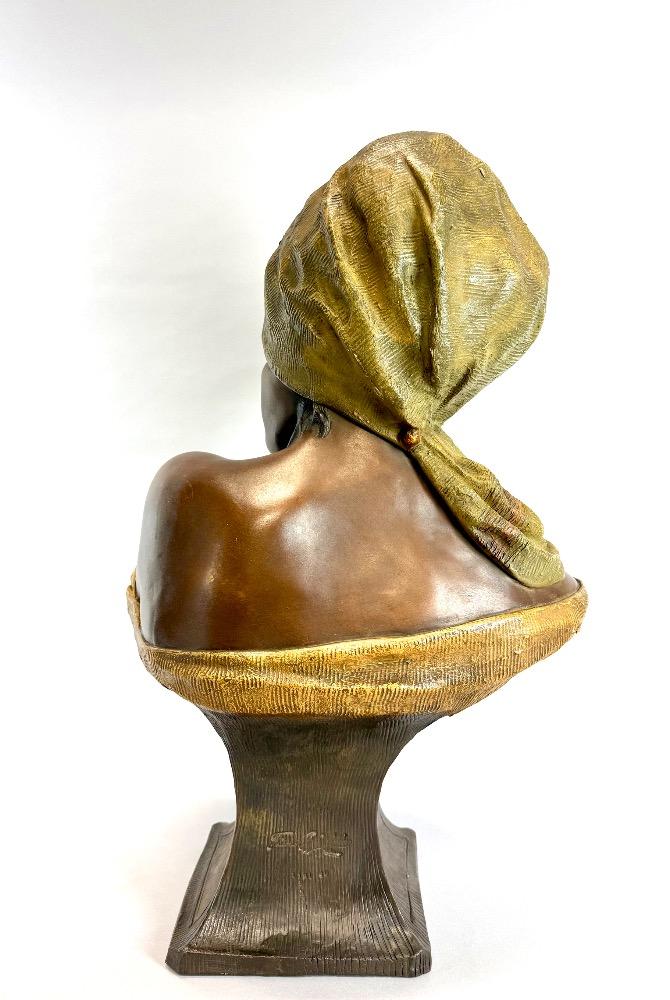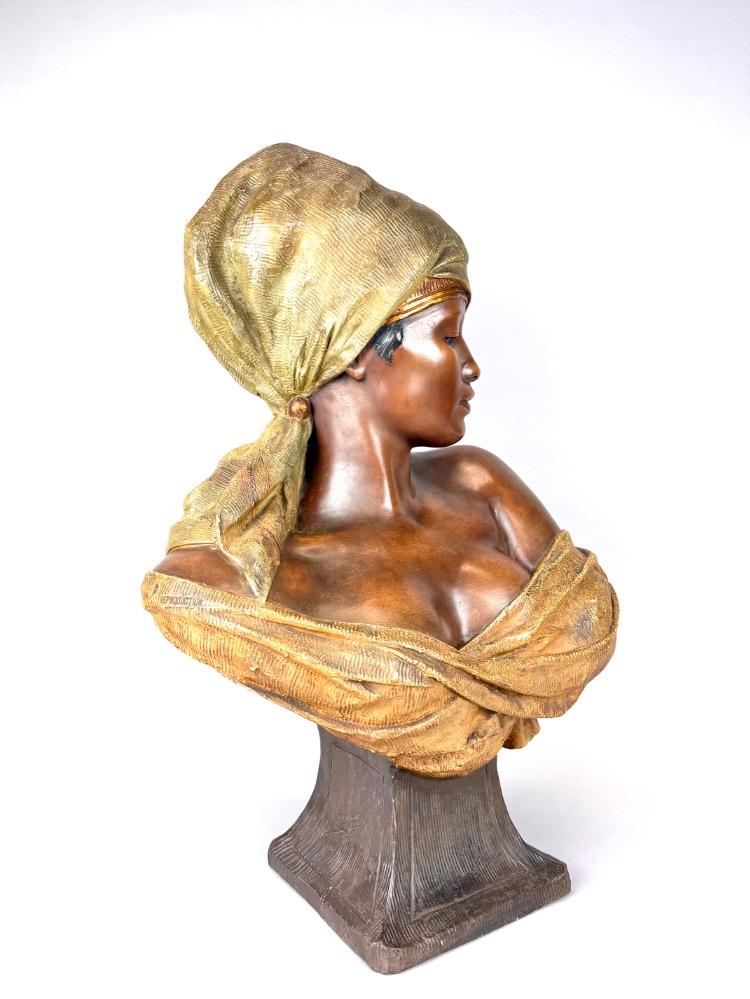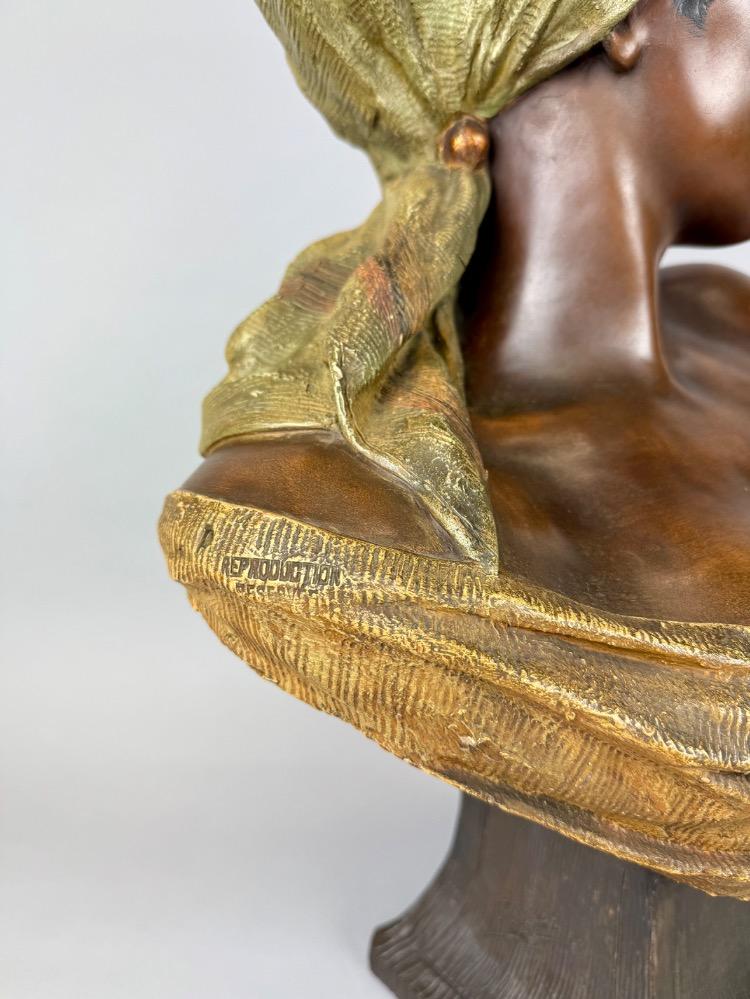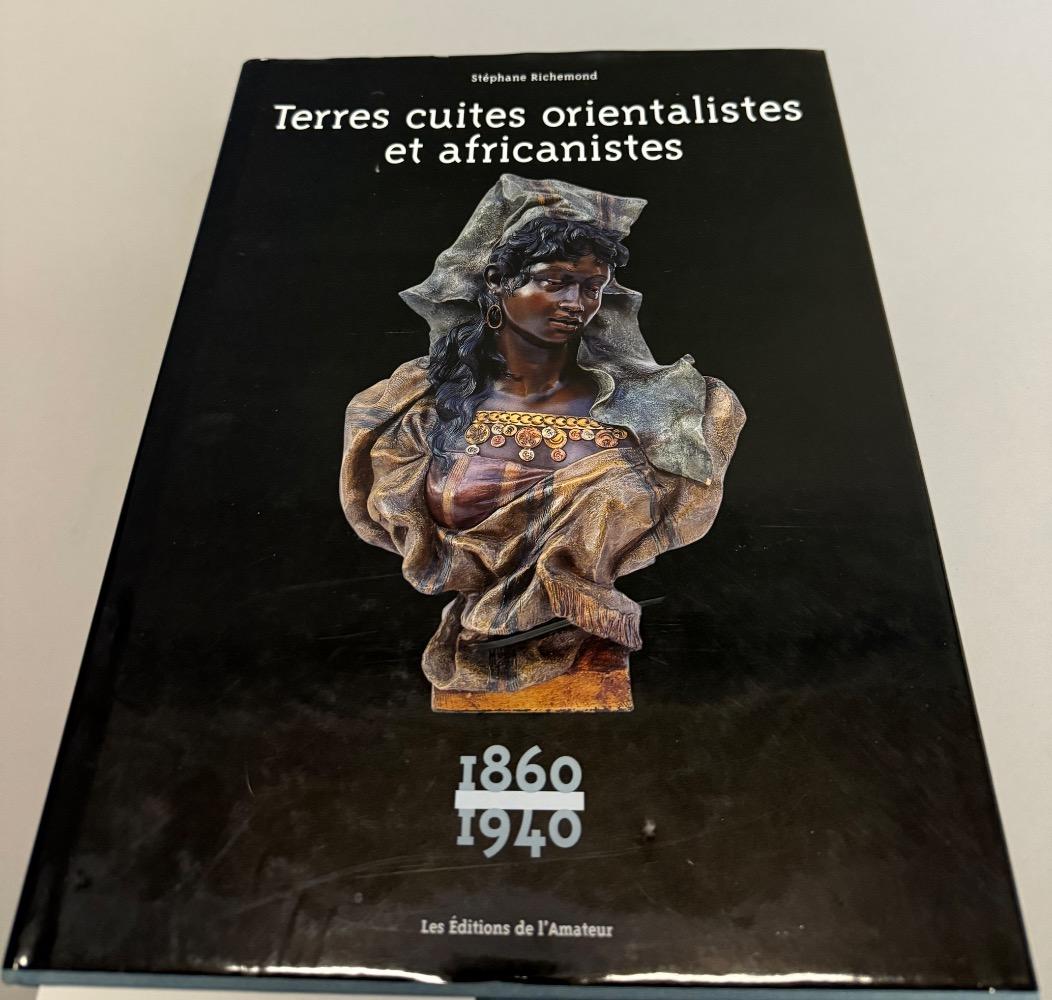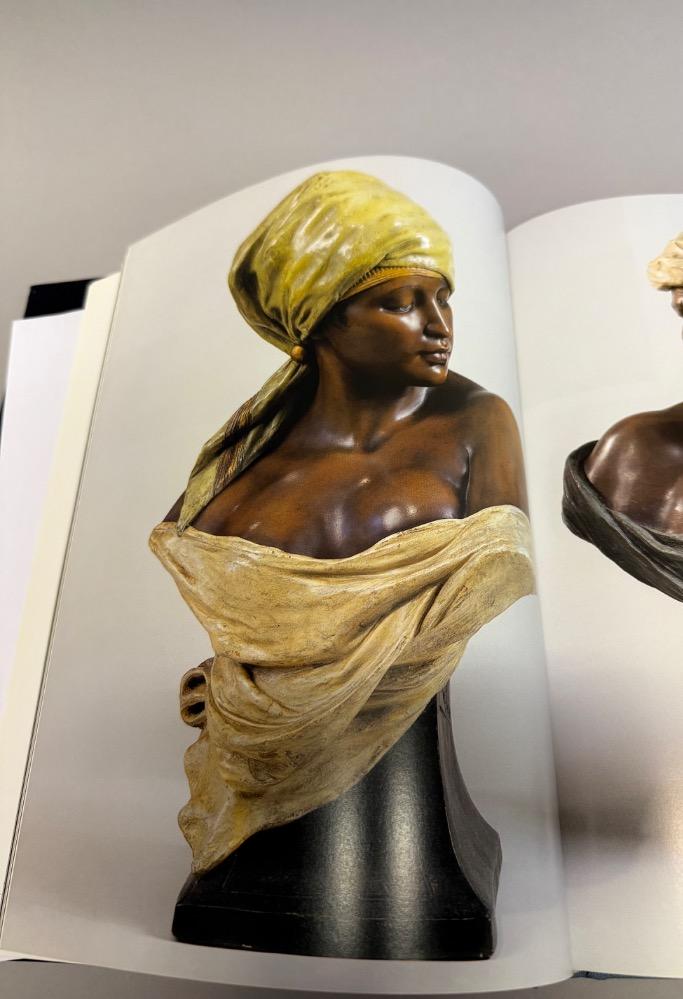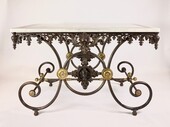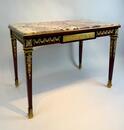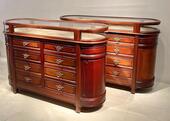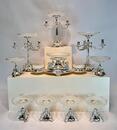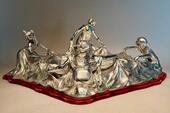A magnificent late 19th-century wrought-iron lantern by Valerian Gillar, Vienna, fitted with beveled glass panels.
This exceptional lantern showcases the refined craftsmanship for which the Viennese master Valerian Gillar was known. Richly decorated in ornate Rococo revival style, it features exuberant hand-forged scrollwork, acanthus leaves, and finely pierced openwork details. The six-sided body is framed with beautifully cut glass panels that allow the illumination to highlight the intricacy of the ironwork.
A striking and highly decorative piece, exemplary of late 19th-century Viennese metal artistry — both elegant and imposing, perfect as a statement feature in a grand entrance hall, gallery, or period interior.
Label: V. Gillar, Wien, Siebenbrunnengasse 9
Valerian Gillar (1839–1927)
Austrian master of wrought-iron craftsmanship and Imperial Court Supplier
Valerian Gillar was born on 28 April 1839 in Freiberg in Moravia (today Příbor in the Czech Republic) and died on 23 January 1927 in Vienna. He became one of the most respected metal artists of the late 19th century, known especially for his elegant wrought-iron work. Gillar ran his own workshop in Vienna, located at Siebenbrunnengasse 9, and was appointed k.u.k. Hoflieferant (Imperial and Royal Court Supplier), a title granted only to craftsmen of exceptional quality.
Dimensions:
H100 x 64 x 47 cm.
H39.37 x 25.20 x 18.50 inch.









